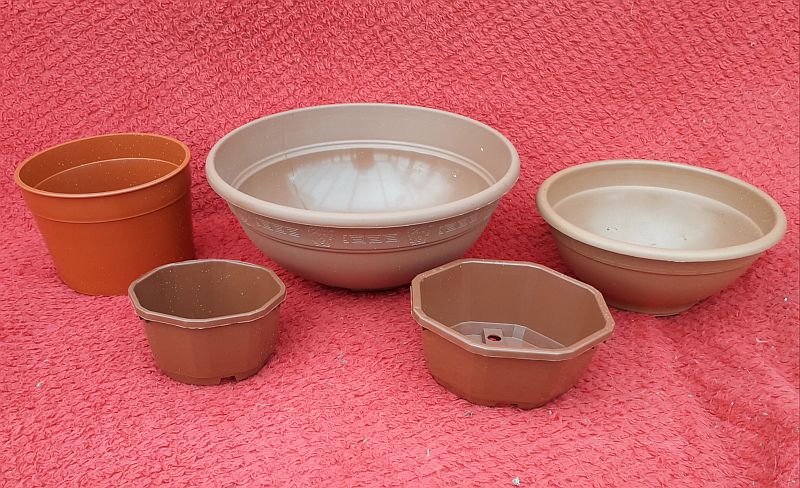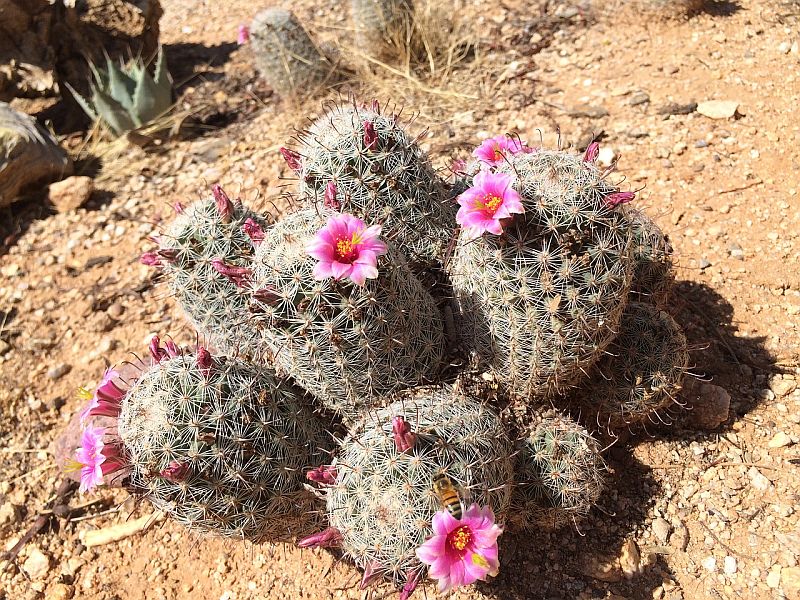General Care
We can learn a lot about how to care for cacti and succulents by learning how conditions in their natural habitats will help cultivation of your own specimens! The majority of them grow in desert and savannah situations:
- low moisture
- dry air
- bright sunshine
- good drainage
- high temperatures
Pots
Cacti are found in places where the rainfall is somewhat limited. As a consequence their root systems spread out to increase the surface area over which water absorbance can occur. For this reason, most squat or globular cacti prefer to be grown in pans as opposed the normal plant pot. Some garden centres sell half pots, but you can buy pans from cactus nurseries – such as us! or via the internet. Tall growing species are grown very successfully in normal plant pots.

Temperature and Ventilation
Light and heat is essential for successful growth. In their natural habitat there is little or no shade and the temperature varies between 18 – 35 degrees Celsius (sometimes even higher!). Therefore, at home, cacti and succulents thrive in greenhouses, conservatories or even on a South facing window sill. But beware in Winter you will need to maintain a minimum temperature of 5 degrees Celsius – so a greenhouse will need insulating and a greenhouse heater being installed.
Dry air, like in semi deserts, is important so ventilation will benefit your plants. Simply keep open the greenhouse door or a conservatory window.
Compost

As in their natural environment, cacti and succulents require a free draining soil. A good compost that satisfies most plants is John Innes, Potting Grit and multi-purpose compost mixed in a ratio of 3:2:1. However, many ‘cactophiles’ enjoy using their own formulas for making up their composts, some use perlite, pumice, and even non-scented cat litter!
Watering and Feeding
It will already be obvious that cacti and succulents are not likely to need an excess of water in cultivation. Although it is true that cacti (less so succulents) endure long dry periods in nature, one cannot exactly term these conditions as ideal. The amount of water we give to our plants is the only condition that is at odds with their natural habitat! In cultivation, these plants will appreciate extra water at more regular intervals during the growing months, but that does not mean their soil should never be allowed to dry out. The quickest way to kill off cacti is for the soil to stay wet for a long period of time, as root rot will occur. The essential act here is only water when you are sure as you can be that the compost has dried out.

A good guide to watering is:
- in Spring, water every 2/3 weeks, but in the height of Summer you could be watering weekly.
- Never leave your potted plant standing in a saucer of water. Let the water drain through before replacing the pot on the saucer.
- Your cacti will relish some fertiliser during the growing season only. A good source is half-strength tomato fertilizer given once a month.
- During autumn watering should be reduced with no fertilizer being used. By November watering should cease all together.
- Winter is the rest period and cacti should be kept dry and in a cool environment. Frost must be avoided.
More Information
We are happy to take questions on caring for cactii and succulents via our contact page, in person if you would like to visit us or at one of our talks.
The British Cactus and Succulent Society produce a number of excellent information sheets which go into more detail on cacti and succulent care:
